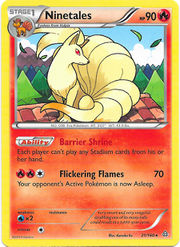Every once in a while, I’ll come across a word that I find interesting. So interesting that I research the word to find about its origins and history. This post is about the word 眉唾物(まゆつばもの).
Let’s break it down first:
眉 まゆ eyebrow
唾 つば saliva; spit
物 もの thing
If you’re like me, you probably have no idea how to interpret this word at first glance. Well, here’s the definition via one of the dictionaries in my Casio Ex-Word:
如何わしいもの。真偽の疑わしいもの。
This word is used to refer to something suspicious or questionable.
**If you were only interested in what the word meant, feel free to stop reading now. Below is a rambling mess of how I searched for more information about the word and somehow became a fan of reading really old Japanese stories.
After consulting my dictionary, I was even more confused. Not because I didn’t understand the definition, but because I couldn’t see the connection. That’s when I noticed that I was excited to do some research and learn something new about Japan. I love that feeling.
My first step in researching a new word is always to dig deeper into my Casio. It’s an incredible little piece of technology and I love it. It turns out another dictionary had a useful tidbit below the definition:
まゆに唾をつけると狐(きつね)などに化かされないという俗信から。
So the term originates from a superstition that states you can avoid being tricked by a fox by putting saliva on your eyebrows. At this point I was too curious to be satisfied with just a piece of trivia in a dictionary entry. A quick Google search led me to the “Database of Strange Phenomena and Yokai” from the International Research Center for Japanese Studies website. The database contains bibliographic information related to folklore research. This database contains thousands of entries about foxes, and I found a little more information about the superstition. According to the stories, foxes needed to count a persons eyebrow hairs in order to read their minds; putting saliva on one’s eyebrows made it harder for foxes to count individual hairs.
Because the entries in the database are only summaries of what was actually written, I couldn’t get too much detailed information out of it. I did, however, feel like I had a lead to find out even more stuff. The entries I found in the database were from the early 1900s, so I decided to switch gears and look for even earlier references to the whole fox-eyebrow-saliva connection.
Futher searching led me to the Tokaidochu Hizakurige(東海道中膝栗毛), a comic novel written by Jippensha Ikku(十返舎一九). The story, published in 12 parts between 1802 and 1822, is about two travelers and their journey from Edo to the Ise Shrine. In one part of the tale Yajirobe, one of the main characters, hears a story about a fox that has been tricking travelers. After hearing the story he immediately puts saliva on his eyebrows. It’s a pretty funny scene. Thanks to modern technology, I was able to actually read the original. There are several places online one can use to read archived materials, legally of course. I’ll get to that in a future post.
In conclusion, I set out to learn where a word came from. What I found instead was an interest in 滑稽本, comical stories from the Late Edo period. I rekindled my interest in Japanese folklore and found several online databases and sources of information on the subject. I also became more familiar with reading Edo period Japanese, so overall I’d say this search has been a success.
Have you ever done research just for the sake of doing research? Have you ever discovered a new interest( or rekindled an old one) as a result? Leave a comment and tell me your story.
Fun Fact: The pokemon known as Ninetales in America is called キュウコン in Japan.

